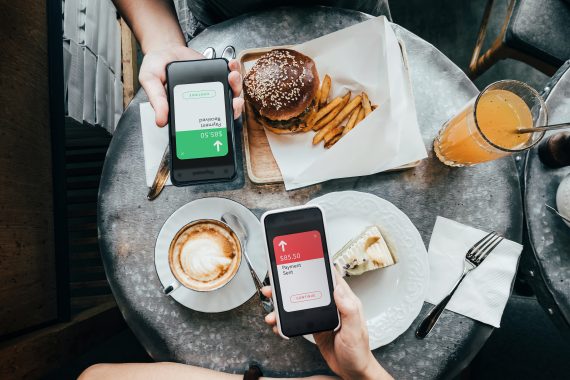In October 2024, Apple is set to open its NFC (Near-Field Communication) technology using the Secure Element (SE) to third-party platforms, ushering in a new era of competition and innovation in digital wallets. This change presents a significant opportunity for banks, fintech companies and retailers to establish themselves on equal footing with Apple Pay, a dominant presence in the market since 2014.
What’s changing?
Following the iOS 18.1 update, third-party apps will gain access to Apple’s NFC technology, enabling them to create digital wallets. Available features will be similar to Apple Pay, which include in-store payments, car keys, closed-loop transit, corporate badges, student IDs, home keys, hotel keys, merchant loyalty and rewards cards and event tickets, with government IDs to be supported in the future.
Previously, only Apple Pay had the ability to leverage NFC via the SE in iPhones, allowing consumers to digitize their cards for safe, tap-to-pay transactions at point-of-sale terminals. Following a ruling by the European Commission, Apple faced significant pressure to open its NFC technology to third parties. Apple agreed to the ruling and extended the decision to Australia, Brazil, Canada, Japan, New Zealand, the United Kingdom and the United States. According to Apple, to incorporate this new solution in their iPhone apps, “developers will need to enter into a commercial agreement with Apple, request the NFC and SE entitlement and pay the associated fees.”
Why this matters for the banking industry
The new competitive environment means banks must decide whether to stay within their current mobile banking apps or evolve into full digital wallets. It’s critical to make strategic decisions now—whether through individual efforts or industry collaboration—to maintain customer loyalty and prevent further disintermediation by big tech companies.
A 2024 global payments technology reinvention survey by Accenture, involving 326 banks, revealed that consumer accounts and domestic payments bear the highest levels of technical debt among payment offerings. But if banks choose to use best-in-class solutions like NFC-enabled wallets, they can overcome some of their historical roadblocks to customer adoption thanks to the seamless user experience it offers. In addition, banks don’t have to develop digital wallet functionalities from scratch, reducing the creation of more technical debt.
For banks and other major financial institutions, this presents both a challenge and a strategic opportunity. The ability to offer their own NFC-enabled wallets can provide direct revenue from increased spend, loyalty programs and cross-selling financial services. Banks can also re-establish relevance by becoming “top-of-wallet” and integrating additional features like Buy Now, Pay Later (BNPL), peer-to-peer (P2P) payments and embedded financial products. The challenge will be determining a clear strategic direction and moving quickly to stay ahead of other wallet providers.
Our view on the competitive landscape
The opening of NFC technology is expected to trigger competition from a range of players:
-
- Banks and Issuers like Wells Fargo and Chase may seek a first mover advantage by incorporating a payment experience in their existing mobile banking app to capitalize on their strengths in rewards programs, post-transaction financing and integrating customer financial services.
- Retailers such as Amazon and Walmart may focus on using NFC for in-store experiences and loyalty programs, further deepening customer engagement.
- Fintechs like PayPal and Venmo, with their strong digital presence and social commerce capabilities, may look to tap into P2P payments and unique digital experiences.
Each player will need to differentiate their wallet offerings by focusing on seamless integrations, customer value and targeted use cases like loyalty programs or specialized transactions.
What’s next?
We see three key models emerging as issuers respond to this opportunity:
-
- Standalone Wallets: Banks and fintechs will compete head-to-head by launching their own digital wallets, offering integrated financial services and rewards.
- Single-Use Wallets: Specialized wallets focusing on niche areas like transit, food or gas purchases will gain traction, especially from retailers and fintechs seeking specific market segments.
- Consortium of Banks: Banks may collaborate to create a joint wallet solution, pooling resources to provide a competitive alternative. This could be similar to successful initiatives like Zelle, which was developed by a network of banks and became a widely adopted peer-to-peer payment solution.
Rather than rushing into action, financial institutions should carefully assess their current mobile payment capabilities and customer needs. Each approach will require strategic planning, with a focus on how best to align their strengths with customer demands and market opportunities to maximize long-term value.
Please reach out if you would like to learn more about NFC technology and the impact on digital wallets and other payment services. Accenture is here to help and will also be at Money2020 in Vegas if you’d like to meet during the event.
We’d like to thank our colleagues Will Hay, Tom Skomba, Chris Dickey and Nicole Semenov for their contribution.
This makes descriptive reference to trademarks that may be owned by others. The use of such trademarks herein is not an assertion of ownership of such trademarks by Accenture and is not intended to represent or imply the existence of an association between Accenture and the lawful owners of such trademarks.






